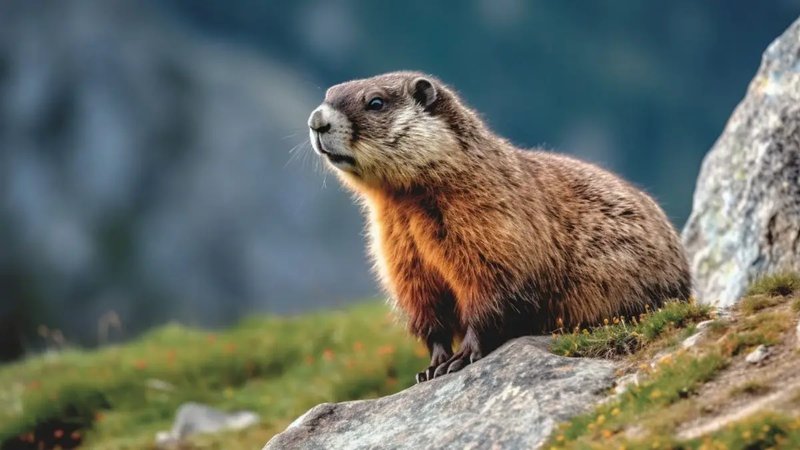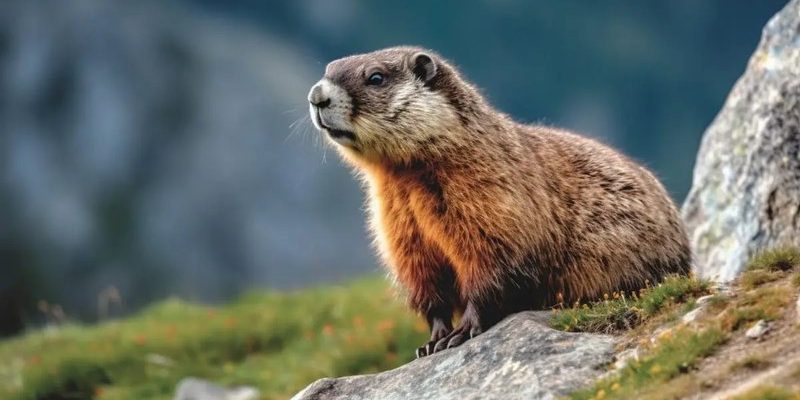
When you consider where marmots live, think of a cozy mountain cottage, nestled in a meadow full of wildflowers. Marmots prefer wide-open spaces where they can keep watch for predators while enjoying the sunshine. They’re not picky about their homes, but they do have specific needs that keep them happy and safe. Let me explain how their habitats vary and why it matters for their survival.
Marmot Species Overview
Before diving into their habitats, it’s important to understand that there are different species of marmots. The most common types include:
- Yellow-bellied Marmot: Found mainly in the Rocky Mountains, these marmots are social and often seen in groups.
- Woodland Marmot: This species prefers forested areas and is typically found in high elevations.
- Alpine Marmot: Living in the Alps and other mountainous regions, they’re well-adapted to cold, harsh conditions.
Each species has its own unique preferences for habitat, which helps them thrive in different environments. Understanding these distinctions can give you a clearer picture of where to spot them in the wild.
Preferred Habitats of Marmots
Marmots thrive in a variety of habitats, but they favor open areas like meadows, rock outcrops, and grassy slopes. Their homes are often at high elevations—think of places like the Rocky Mountains or the Swiss Alps.
Marmots are burrowers, creating extensive tunnel systems to escape predators and keep warm during the harsh winter months. These burrows are usually dug into soft, loose soil, making it easy for them to dig and create a comfy home. During the summer, they love soaking up the sun in their open, sunlit meadows. This is where you’ll often spot them:
– Foraging for food: Marmots munch on grasses, flowers, and herbs.
– Sunbathing: They take breaks in the sun to regulate their body temperature.
– Socializing: They often gather in groups to play or groom each other.
Finding marmots in these sunny meadows is like stumbling upon a hidden treasure after a long hike.
Geographical Distribution
Now that we’ve covered their preferred habitats, let’s explore where these little creatures actually live. Marmots are primarily found in the northern hemisphere, with their distribution spanning a wide range of locations:
- North America: Yellow-bellied marmots can be found from Canada down to New Mexico, while hoary marmots live mainly in the western US and Canada.
- Eurasia: In Europe, the Alpine marmot is common in the Alps, while in Asia, you’ll find various species scattered across mountain ranges.
Their geographical spread helps them adapt to various climates and elevations, but they always stick to their preferred space—high and grassy with plenty of nooks and crannies for hiding.
Climate Influence on Habitat
The climate plays a big role in where you’ll find marmots. They thrive in areas that have cool summers and cold winters. If you think about it, it makes sense: they need to hibernate during the winter months when food is scarce.
Here’s a quick breakdown of how climate affects their habitats:
– Temperature: Marmots are well-adapted to cooler temperatures. You won’t find them basking in the hot, humid lowlands; instead, they prefer alpine regions where the air is crisp.
– Snow cover: In the winter, thick snow can protect their burrows from extreme cold, creating a stable environment for hibernation.
– Food availability: During the summer, marmots depend on the abundance of vegetation in their mountainous homes. The rising temperatures trigger plant growth, providing them with ample food.
Recognizing this connection between climate and marmot habitats highlights their vulnerability to climate change.
Challenges in Their Habitat
As adorable as marmots are, they face several challenges in their habitats. One of the biggest threats they encounter is habitat destruction. Here are a few factors that impact their homes:
- Urban development: As cities expand, marmot habitats can become fragmented, reducing their living space.
- Climate change: Rising temperatures and changing weather patterns can affect food sources and breeding habits.
- Predation: With more urbanization, predatory animals may encroach on their territory, putting additional stress on marmot populations.
These challenges emphasize the need for conservation efforts to help protect their natural habitats.
Conservation Efforts
Given the threats marmots face, there are ongoing conservation efforts aimed at protecting these lovable creatures. Many national parks and wildlife reserves work to safeguard their habitats from urban development and other environmental pressures.
Here’s how conservationists are making a difference:
– Habitat Restoration: Efforts are underway to restore compromised habitats, ensuring marmots can thrive without disruption.
– Research and Monitoring: Scientists study marmot populations to track their health and adapt conservation strategies as needed.
– Education and Awareness: Raising awareness about marmots helps the public understand their importance and the need for habitat protection.
These efforts are essential not just for marmots but for the broader ecosystem they contribute to.
So, where do marmots live? They thrive in high, open meadows and rocky slopes, mainly in mountainous regions around the world. Their habitats are crucial for their survival, offering shelter, food, and a place to socialize. Understanding their distribution and the challenges they face is key to ensuring these charming little animals continue to flourish.
Next time you find yourself in the mountains, keep an eye out for these furry fellows. Whether you spot them sunbathing or scurrying back to their burrows, you’ll appreciate the unique role they play in their ecosystems—and perhaps even be inspired to support conservation efforts that protect their homes.

